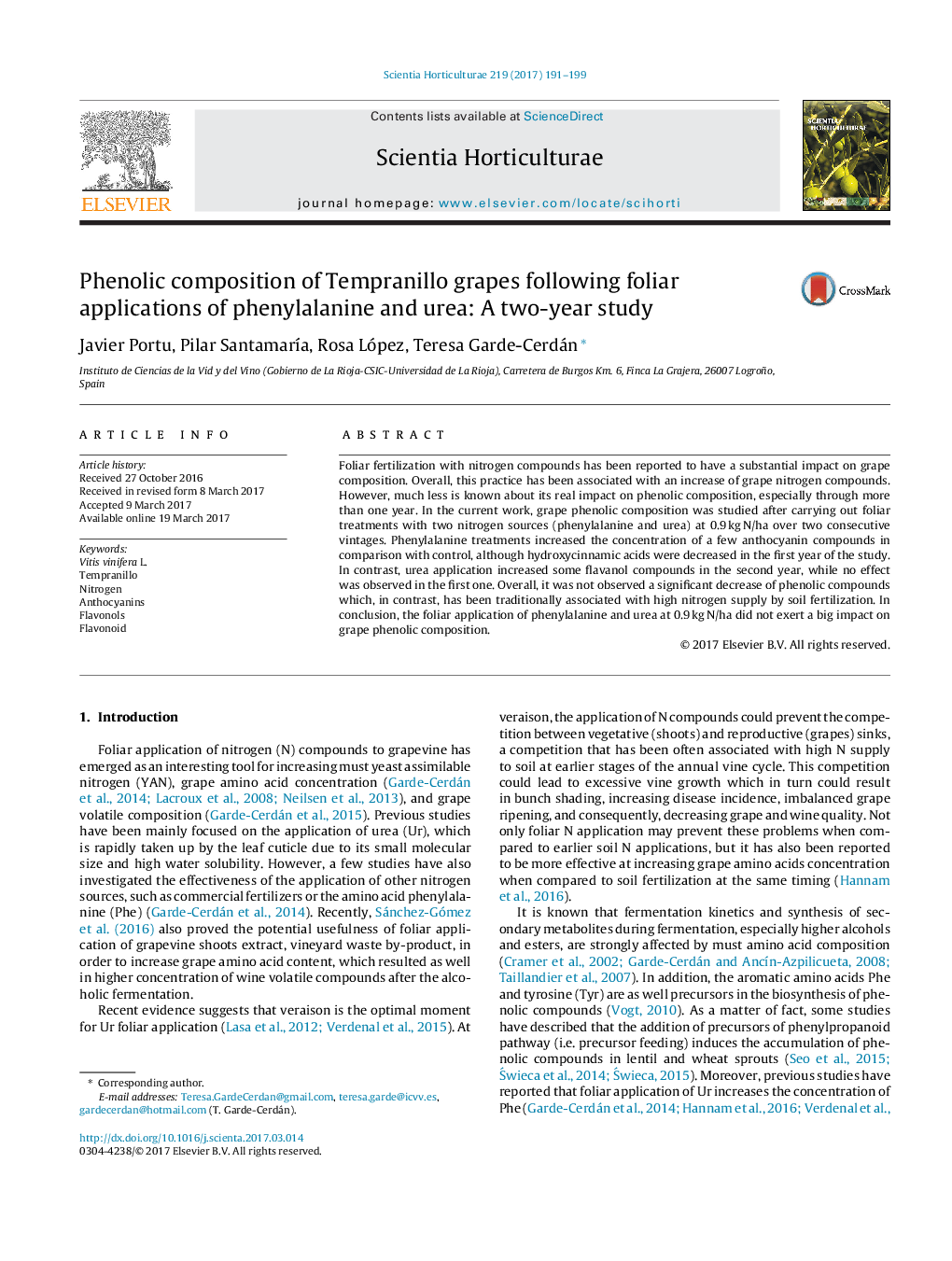| کد مقاله | کد نشریه | سال انتشار | مقاله انگلیسی | نسخه تمام متن |
|---|---|---|---|---|
| 5769727 | 1628779 | 2017 | 9 صفحه PDF | دانلود رایگان |

- Foliar application of urea and phenyalanine barely affect grape phenolic composition.
- Vintage had however a stronger impact on grape phenolic composition.
- Phenylalanine application slightly increased anthocyanin compounds.
- Urea treatment slightly increased flavanols.
Foliar fertilization with nitrogen compounds has been reported to have a substantial impact on grape composition. Overall, this practice has been associated with an increase of grape nitrogen compounds. However, much less is known about its real impact on phenolic composition, especially through more than one year. In the current work, grape phenolic composition was studied after carrying out foliar treatments with two nitrogen sources (phenylalanine and urea) at 0.9 kg N/ha over two consecutive vintages. Phenylalanine treatments increased the concentration of a few anthocyanin compounds in comparison with control, although hydroxycinnamic acids were decreased in the first year of the study. In contrast, urea application increased some flavanol compounds in the second year, while no effect was observed in the first one. Overall, it was not observed a significant decrease of phenolic compounds which, in contrast, has been traditionally associated with high nitrogen supply by soil fertilization. In conclusion, the foliar application of phenylalanine and urea at 0.9 kg N/ha did not exert a big impact on grape phenolic composition.
Journal: Scientia Horticulturae - Volume 219, 17 May 2017, Pages 191-199